This article was co-authored by Clinton M. Sandvick, JD, PhD. Clinton M. Sandvick worked as a civil litigator in California for over 7 years. He received his JD from the University of Wisconsin-Madison in 1998 and his PhD in American History from the University of Oregon in 2013.
This article has been viewed 28,514 times.
There are several different types of “medical consent forms.” You might be a doctor who needs to draft a standard form that you can use in your office. The purpose of this form is to record that you gained informed consent from the patient before providing the treatment. You may also need to write a medical consent form when your child is in the care of another adult. In this situation, the form authorizes the adult to seek medical treatment for the child.
Steps
Drafting a Medical Consent Form for an Office
-
1Identify its purpose. If you are a doctor, then you need to make sure that you get informed consent from your patients before providing health care. Accordingly, you need to document that you gave the patient all relevant information about the medical condition and the proposed treatment.[1]
- Because you need to use this form over and over, with each new patient, it will be basically a template that allows you to fill in information unique to the patient you are meeting with.
-
2Open a word processing document. You should make sure that the font and type is a comfortable size so that your patients can read the information on the form.
- At the very top of the page, title the document “Medical Consent Form.” Put the title in bold.[2]
Advertisement -
3Identify yourself. Move down two spaces and then put down the name of your clinic or practice. You may also want to include the address.
-
4Create a section for patient information. A couple lines down from your clinic’s name, you should create a section where you can write or type the patient’s name. You can type “Patient Name:” and then include a blank line.[3]
- You might also want to leave a line for a patient identification number, if you use those.
-
5Identify the doctors. The medical consent form should start off with the patient giving consent to a doctor, who is named. You could type, “I approve and direct Dr. [name], other doctors, or others judged qualified by the doctor to perform [the treatment].”
- If more than one doctor practices in your office, you can leave the doctor’s name line blank and fill in the form individually for each patient.
- If you provide more than one standard treatment, then you can insert a blank line where “the treatment” appears. Some doctors, however, only perform one kind of surgery, e.g., cesarean section deliveries. If that is your situation, then you might want to type in the procedure you perform regularly.
- You can also create separate medical consent forms for each of your most common procedures.
-
6Account for unforeseen circumstances. In addition to gaining consent for the medical procedure, you need to get patient consent for unforeseen or unexpected conditions. You need to have the patient consent to additional procedures because it is illegal to expand the scope of a surgery or other treatment without consent.[4]
- You can type, “My doctor might need to perform other procedures while treating me. This may occur if he or she finds an unexpected condition. If my doctor believes that I need additional procedures, then I agree to them.”
-
7Identify risks. You should have a section that identifies known risks of the medical procedure. Remember, the purpose of the consent form is to get your patient’s “informed” consent. Accordingly, you need to let them know of the dangers of the proposed treatment.[5]
- Title this section “Risks” in bold.
- Then list the risks. You might create a separate medical consent form for each treatment you offer in your office. In that situation, you can type out the most common risks, using bullet points. If you want to use the same form for all treatments, then you will probably need to leave this section blank and then write in the most common risks.
-
8Include information on general risks. Most medical procedures carry some risk. You can create a section for “General Risks.” For example, if you do a form of surgery, then you should apprise your patient of the general risks inherent in all surgeries.[6]
- You could type, “I understand that there are general risks with all invasive procedures. These risks include...” and then include the risks.
-
9Explain alternatives. You should notify all patients of alternatives to the proposed treatment. This information should also appear in the medical consent form.[7]
- Title the section, “Other Options to ______” and fill in the blank with the proposed procedure. Then you can list the alternatives.
- You should also explain the risks of proposed alternatives. You should leave space to do this.
-
10Conclude with consent paragraphs. At the end of the medical consent form, you need language in which the patient explicitly grants consent to the procedure. You may need consent for multiple procedures. For example, you might need consent to perform heart surgery but also to give a blood transfusion. In this case, include a separate consent paragraph for each procedure.[8]
- For example, you could type, “The purpose of this procedure has been explained to me. I know that the practice of medicine is not an exact science and that there is no guarantee about the outcome of the procedure. I have been informed of the medical risks and results related to the procedure. I have also been told about reasonable alternatives and the risks/results of these. I have also been informed of the risk of foregoing treatment.”
-
11Create a signature block. There should be space, at the bottom of the document, for the patient or legal guardian to sign and date. You also should create space for a witness’s signature and for a translator’s signature.
- For the witness’s signature, include this language: “I, ______, am an employee who is not the patient’s physician or the authorized health provider. I have witnessed the patient voluntarily sign this form.” Then include a signature line underneath.
- For the translator, include this language: “To the best of my knowledge, the patient understood what was translated and voluntarily signed the form.”
Writing a Medical Consent Form for Your Child
-
1Understand the purpose. A medical consent form for a minor is a way to give someone permission to obtain medical treatment for your child. With a signed medical consent form, the adult then can get immediate medical treatment; otherwise, the doctor or hospital will have to call around and try to reach you.[9] There are a variety of situations in which you would want to give someone this permission:
- Your child plays sports.
- Your child is going on a school trip and will be away from you. You will want an adult supervisor to have the ability to get medical treatment for your child.
- The child is being temporarily taken care of by another person.
-
2Look for templates. You may be able to find a medical consent form template online. Also, for organized activities (like sports or field trips), the school should provide you with a blank form to fill out and sign.
-
3Begin to draft the document. You can begin drafting your medical consent form by opening up a blank word processing document. Set the font and line spacing to a comfortable size.[10]
- Also title the document at the top. You should title the document “Medical Consent Form” in bold type. Center the words and make sure that they stand out. The form will likely be filed in a filing cabinet and you want the adult to be able to locate it quickly.
-
4Open with a grant of authority. You should get to the point and immediately identify who you are granting authority to. Type, “We, the undersigned parents, grant permission to [name person] to obtain medical treatment for the following children….”[11]
-
5Identify your children. You should list the children to whom the medical consent form will apply. Type their legal name, home address, and date of birth. Line them up in a column so that it is easier to read.[12]
-
6Include medical information. Upfront, you should include medical information about the children, including their doctor, health insurance plan, and allergies. You should title this section “Information for Medical Treatment.”[13]
-
7Add another authorization and consent section. Title this section “Authorization and Consent of Parents.” In this section, you need state what medical treatment you authorize. You can be both specific and general.
- For example, you can type, “I hereby state that I have legal custody of the aforementioned minors. I grant my authorization and consent for [insert name] to administer general first aid for any minor injuries. If the injury is life-threatening, or requires emergency treatment, I grant authorization for [name] to obtain any and all emergency professionals to transport and treat the minor children. I also authorize consent for medical procedures, such as any blood transfusion, X-rays, medication, anesthetic, or other medical diagnosis, treatment, or hospital care, provided it is rendered at the request and under the supervision of a licensed physician, surgeon, hospital, dentist, or other duly-licensed medical professional. I agree to assume financial responsibility for all expenses incurred by the medical treatment and care.”
- Note how the paragraph mixes specific treatments (e.g., “blood transfusions”) with general grants of authority to seek medical care (e.g., “other medical treatment”). If you want to specifically exclude a treatment, then list that exclusion separately.
-
8End with a “good judgment” clause. You want to end the medical consent form by stating that you are giving authorization to the designated adult in expectation that he or she uses their best judgment.
- You can write, “It is understood that this authorization is given in advance of any medical treatment. However, it is given to the designated adult in the exercise of his or her best judgment upon the advice of medical or emergency personnel.”
-
9Sign in front of a notary public. You should have your signature witnessed. Although you do not need the witness to be a notary, it is always a good idea to use one. A professional notary is a more “official” witness and more credible.
- Notaries can be found in most large banks or at your county clerk’s office. You can also find a notary by visiting the courthouse.
- Be sure to bring sufficient personal identification. A driver’s license or passport should be sufficient.
References
- ↑ http://www.bestmedicalforms.com/sample-medical-consent-form.html
- ↑ http://www.bestmedicalforms.com/sample-medical-consent-form.html
- ↑ http://www.bestmedicalforms.com/sample-medical-consent-form.html
- ↑ https://www.mayoclinicproceedings.org/article/S0025-6196(11)60864-1/fulltext#secd22709075e352
- ↑ https://www.mayoclinicproceedings.org/article/S0025-6196(11)60864-1/fulltext#secd22709075e385
- ↑ http://www.bestmedicalforms.com/sample-medical-consent-form.html
- ↑ http://www.bestmedicalforms.com/sample-medical-consent-form.html
- ↑ http://www.bestmedicalforms.com/sample-medical-consent-form.html
- ↑ http://www.acep.org/medicalforms/
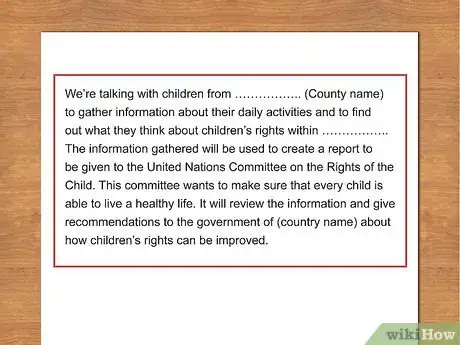




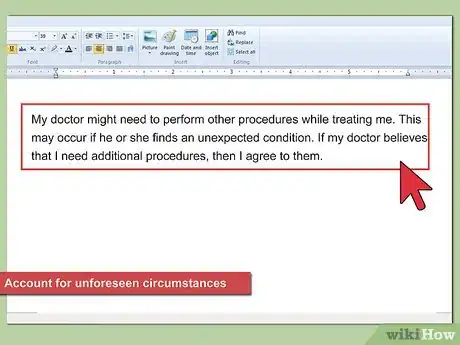



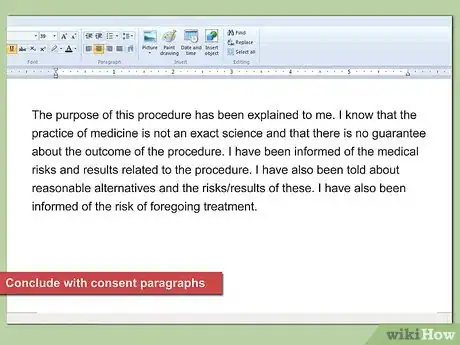
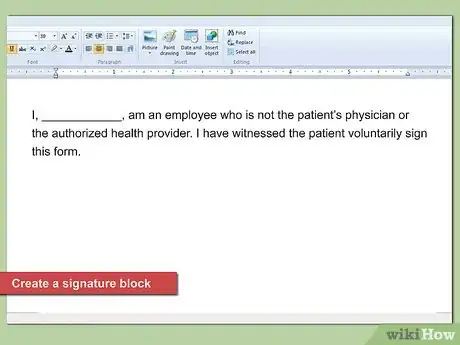
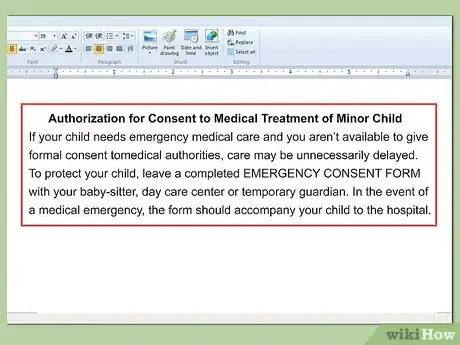
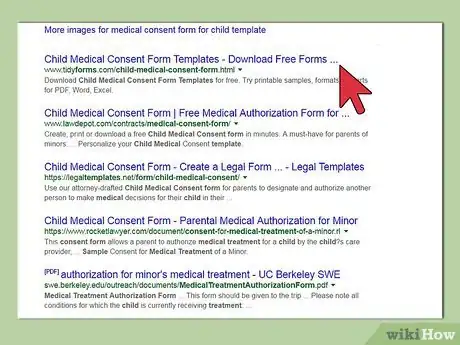
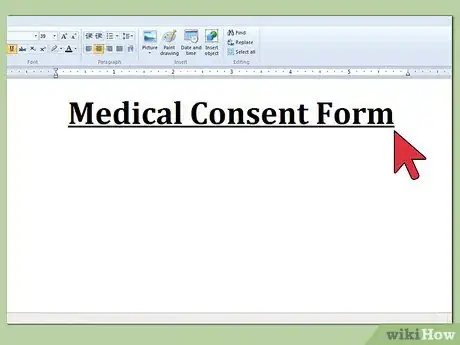
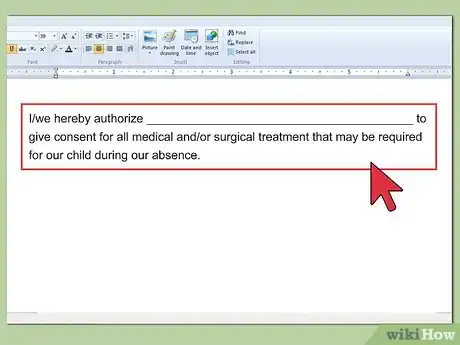
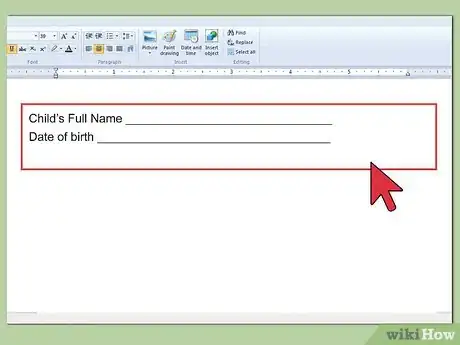
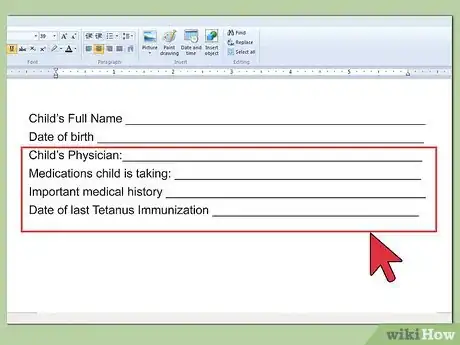

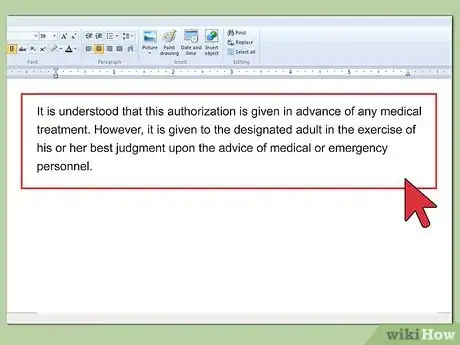
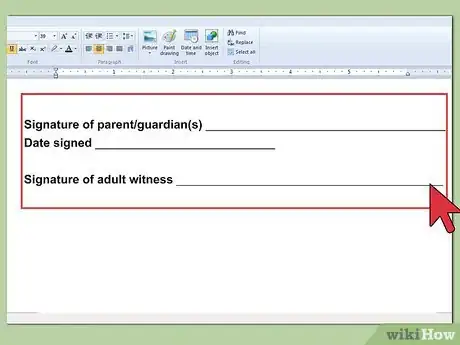







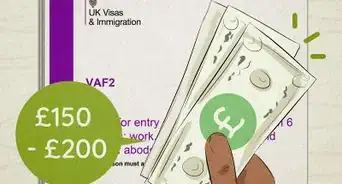














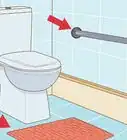





































Medical Disclaimer
The content of this article is not intended to be a substitute for professional medical advice, examination, diagnosis, or treatment. You should always contact your doctor or other qualified healthcare professional before starting, changing, or stopping any kind of health treatment.
Read More...